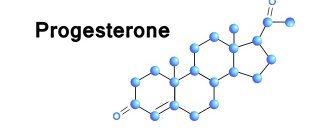Menstruation is the name for physiological uterine bleeding that occurs monthly to almost all females that belong to placental species of mammals, including humans.
Menstrual days occur not only in women, but also in primates, bats and jumping mice.
Throughout the entire menstrual cycle, complex sequential processes occur in the female body, which have been formed over millions of years of evolution so that a person can reproduce similar offspring.
On the other hand, girls' periods also perform a protective function. To understand why menstruation occurs and why periods are needed in general, you need to know what happens to the body throughout the entire menstrual cycle.
In this article we will present all the information about menstruation: what it is, what is its function, what characteristics should be normal and what is considered a deviation.
What is menstruation?
The content of the article
Menstruation or menstruation refers to bloody discharge from the vagina, which occurs in a woman approximately once a month and lasts on average for 3-5 days. The discharge is a detached inner layer of the uterus, which is renewed monthly. Normally, every day of menstruation, a woman loses from 50 to 250 milliliters of blood, which, with a normal duration of menstruation, does not cause complications in the body and is quickly restored. If a woman loses more blood than this norm every day or her periods last longer than 6-7 days, anemia or anemia may develop.
The process of menstruation is physiological and should occur regularly in the body of every girl who has reached puberty. At the same time, menstruation cannot be considered in isolation, because this phenomenon is an integral stage of a complex menstrual cycle.
Maintaining hygiene
Hygiene during menstruation must be observed especially carefully. This requirement is justified not only by the presence of an unpleasant odor in the discharge, but, above all, by preserving the girl’s intimate health. An intimate shower is needed more often than usual. It would also be a good idea to take care of special detergents, because regular soap is not the best product for intimate hygiene: it further dries out the skin, which is already subject to excessive friction due to wearing pads.
It is not recommended to take a bath these days, because tap water contains many pathogenic microorganisms, and the cervix is open. This makes it easier for them to get inside, and then infection is inevitable. Also, hot water will lead to increased bleeding, which will negatively affect the general condition. It is better to wash yourself under warm water 3-4 times a day, and if this is not possible, then you should purchase special wet wipes for intimate hygiene.
The menstrual cycle and its features
The menstrual cycle is regulated by hormonal factors. The regulation process involves hormones of the cerebral cortex, hypothalamus, pituitary gland and endocrine glands. It is hormones, acting on the organs of the reproductive system, that cause all the processes that occur during a woman’s menstrual cycle.
According to gynecologists, the normal menstrual cycle ranges from 21 to 35 calendar days. Most often, women note the duration of the monthly cycle from 26 to 30 days. In the absence of serious pathologies of the reproductive system, women's periods are regular and stable. At the same time, a shift in a certain stage by several days is not a pathology and is considered a normal physiological phenomenon.
When considering the stages of the menstrual cycle, it should be mentioned that its beginning is always considered the first day of menstruation. This means that the female cycle is considered “from period to period.” However, when it comes to gynecological stages, experts suggest considering a slightly different classification of stages.
Stage No. 1 – Follicular period of menstruation
At the beginning of the menstrual cycle, a woman’s body exhibits a very low concentration of the female hormones estrogen. Such a low level becomes a stimulus for the hypothalamus to produce special releasing hormones, which subsequently act on the pituitary tissue. It is in the pituitary gland that two main hormonal substances are produced that regulate the monthly cycle - follicle-stimulating hormone (FSH) and luteinizing hormone (LH).
These chemicals enter the bloodstream and reach the woman's ovarian tissue. As a result of this interaction, the ovaries begin to produce the same estrogens that are not enough in the body in the first days of the menstrual cycle. A high level of estrogen in the blood is necessary for the process of active growth of follicles (female germ cells) to begin in the ovaries.
Every month, several such cells begin to mature in the female body, among which one dominant follicle stands out. It is the process of maturation and growth of the follicle that formed the basis for naming the first stage of the menstrual cycle, which is called follicular. The duration of the first stage may vary for each woman, but on average, with a 28-day cycle, follicle maturation takes about 14 days. The longer this stage lasts, the longer the woman’s entire menstrual cycle.
Stage No. 2 – Ovulation
As mentioned above, during the first stage the dominant follicle grows actively and rapidly. During this time, its size increases approximately five times, as a result of which the enlarged cell protrudes beyond the ovarian wall, as if protruding from it. The result of such protrusion is the rupture of the follicle membrane and the release of the egg, ready for further fertilization. It is at this stage of the menstrual cycle that the most favorable period for conceiving a child begins. Calculating the date of ovulation is not difficult, especially if a woman has a stable and regular menstrual cycle. The day of ovulation occurs exactly 14 days before the first day of your period.
Stage No. 3 – Corpus luteum phase
After the follicle ruptures, the so-called corpus luteum forms on the wall of the ovary. This formation actively secretes pregnancy hormones - progesterone and estradiol. If during ovulation the fusion of the egg and sperm occurs and conception occurs, the placenta is formed from the corpus luteum. If fertilization does not occur, a small area of scar tissue forms in place of the corpus luteum. The corpus luteum phase lasts for almost 14 days in almost all women.
Stage No. 4 – Zero phase of menstruation or menstruation
If pregnancy does not occur, dystrophic changes occur in the functional (mucosal) layer of the uterus, which causes its rejection. This is called menstruation. During this process, the vessels supplying the uterine endometrium rupture, which is accompanied by bleeding. As a result, during menstrual periods, a woman notes that, along with blood, particles of the rejected mucous layer of the uterus come out of the uterus through the vagina.
Thus, during menstruation, the processes of separation of the uterine endometrium and its subsequent restoration, which begins already on the second day of critical days, occur simultaneously. Over the entire period of the menstrual cycle, the upper mucous layer of the uterus thickens 4-5 times, after which all stages are repeated.
Treatment
If menstruation appears ahead of schedule, it is necessary to conduct a full diagnosis, on the basis of which an adequate course of therapy is prescribed. Treatment will be carried out depending on which phase has undergone changes and what triggered this process.
To restore reproductive health, conservative methods are used, but sometimes surgical intervention is required.
The following groups of drugs are taken as prescribed by a doctor:
- hormonal;
- hemostatic;
- vitamin complexes.
If inflammation of the female organs is detected, they resort to the use of antibiotics and local preparations that have an antiseptic effect.
Shortening the interval between menstruation is not always considered normal. Such changes are caused by a number of diseases. To identify the cause and restore the previous cycle, you need to be examined by a gynecologist.
When should the first menstruation occur?
The first time menstruation occurs at the age of puberty. According to medical statistics, this age range is from 8 to 16 years. Most often, a girl experiences her first menstrual flow between the ages of 11 and 14 years. By this age, the mother or other older relative must prepare the girl for this process, since the lack of a sufficient level of knowledge can lead to psychological trauma for the child. Signs indicating the imminent onset of menstruation are:
- enlargement of the mammary glands;
- active hair growth in the pubic and armpit areas;
- uncharacteristic vaginal discharge.
According to medical research, the age at which mother and daughter have their first menstruation often coincides, so you should prepare for this age milestone in advance.
Unpleasant sensations
Most often, women complain of pain during menstruation. However, many women believe that pain during menstruation is normal. This is not entirely true. During menstruation, only mild pain can be considered normal. Severe pain may indicate certain disorders, so you should not endure it heroically, you need to seek medical help.
Before menstruation, symptoms such as engorgement of the mammary glands, slight pulling sensations in the lower abdomen, and mood changes may appear. Typically, such phenomena occur during ovulatory cycles. However, pronounced premenstrual syndrome, which disrupts a woman’s quality of life, cannot be ignored. This condition requires correction. You can read more about premenstrual syndrome in the article PMS - premenstrual syndrome - a disease or a bad character?
When does menstruation stop?
Non-occurrence of the next menstruation may indicate either the woman’s pregnancy or the onset of menopause. Sometimes the absence of menstruation is a symptom of a serious pathology in the body, and therefore the first thing to do in this situation is to consult a gynecologist. The age of menopause in a healthy woman varies between 45-55 years, but cases of both earlier and later menopause have been recorded. The entire process of menopause usually takes about two years, during which the woman experiences irregular menstruation with an unusual course.
The issue of restoring the menstrual cycle after pregnancy and childbirth deserves special attention. If a woman does not breastfeed, menstruation usually returns within 2-3 months. If a young mother has normal lactation, the period of absence of menstruation may last for the entire period of breastfeeding. The fact is that the specific hormone prolactin is responsible for the production of milk in the mother’s body, which prevents the restoration of the menstrual cycle. However, if a woman returns to her period during breastfeeding, this is not considered something abnormal and pathological.
Character
Externally, menstrual flow differs from any other, including uterine bleeding.
At the beginning of menstruation, they include pieces of the endometrium and epithelial cells, which come out in the form of mucous blood cords and clots. In the last days of regulation, only blood flows without impurities, its amount gradually decreases.
The color of the discharge is dark red to burgundy, and it may have a slight iron smell. If the discharge smells like rotten meat or fish, contains impurities of pus or has a foamy consistency, you should immediately consult a doctor.
Menstruation should not be too heavy; the volume of discharge can be controlled by the number of hygiene products used per day. Normally, one pad should last for at least 2 hours; if it fills up faster, you should definitely consult a doctor.
You should be careful about hygiene during menstruation, change pads every 3-4 hours, since various pathogenic bacteria can very quickly develop in the blood, provoking vulvovaginitis and other inflammatory processes in the reproductive organs.
Menstruation - normal and pathological
So, a normal menstrual cycle lasts from 21 to 35 days. The critical days themselves are observed for 3-6 days, during which a woman loses from 50 to 250 milliliters of blood every day. A healthy representative of the fair sex should not experience severe pain or notice any obvious pathological symptoms. Any violations and deviations from these norms are considered a pathology and require mandatory medical intervention.
Gynecologists identify the following possible pathologies of the menstrual cycle:
Amenorrhea - delayed menstruation
This term means the absence of menstruation for at least three months, without a physiological reason. This means that the absence of menstruation during amenorrhea is not associated with pregnancy, lactation or menopause. Amenorrhea can be a symptom of such dangerous pathologies as resistant ovarian syndrome, cervical atresia, virilizing ovarian tumors, intrauterine synechiae (Asherman's syndrome), etc. Also, the absence of menstruation can become a characteristic sign of serious hormonal disorders in the body, as well as psychogenic disorders. Sometimes amenorrhea occurs in a woman after severe weight loss.
Menorrhagia or hypermenorrhea - heavy periods
Too heavy or prolonged periods, which are accompanied by significant blood loss. This pathological condition is indicated if critical days last more than 7 days or daily blood loss exceeds 200 milliliters. Usually, with menorrhagia, other pathological symptoms are completely absent, but the woman experiences significant discomfort due to such heavy discharge. The causes of excessively heavy periods can be diseases of the female reproductive system such as endometriosis and uterine fibroids. In rare cases, this deviation from the norm is caused by a blood clotting disorder. A similar menstrual dysfunction can also be observed in women who have previously had an intrauterine device installed for contraception.
Dysmenorrhea - pain during menstruation
It is menstruation, which is accompanied by intense pain that interferes with a woman’s normal professional activities and physical activity. The pain is usually localized in the lower abdomen, spreading to the lumbar region. Acute pain may also be accompanied by bloating. According to doctors, more than 50% of all women periodically experience dysmenorrhea. The search for the cause of this condition should lie in the field of research on endometriosis, fibroids, and inflammation of the fallopian tubes.
Irregular menstruation
Some women note that they have an unequal period between the onset of their periods. If irregularities in the menstrual cycle occur at least 3 times a year, doctors talk about the likelihood of pathological processes in the woman’s body. The causes of irregular periods can be gynecological tumors, cysts, endometrial polyps, inflammatory diseases of the myo- and endometrium, uterine fibroids, endometriosis. Often this disorder is a consequence of hormonal imbalance. Physiological causes of irregular periods include the consequences of abortion, curettage and childbirth.
Diagnostic methods
If your menstrual cycle has become too short, you need to find out why this happened. This phenomenon often occurs in women after childbirth. In this case, this condition is temporary and, as a rule, does not require any specific treatment. In some situations, this problem can be caused by dangerous diseases that require immediate treatment measures. Information about which diagnostic methods are used for a short cycle is presented in the table.
| Diagnostic methods | Types of diagnostic procedures | Purpose of the event |
| History taking | Analysis of the patient’s complaints, study of the medical history | Making a preliminary diagnosis, developing a plan for further action |
| Laboratory research | Clinical blood test | Determination of hemoglobin level, identification of inflammatory processes, signs of chronic kidney and liver diseases |
| Blood chemistry | ||
| Vaginal smear | Confirmation or exclusion of genital infections | |
| Linked immunosorbent assay | Study of hormonal status, examination for tumor markers and the presence of autoimmune diseases | |
| Polymerase chain reaction | Determination of signs of infectious pathologies | |
| Blood test for hormones | Determination of the level of follicle-stimulating, luteinizing, thyroid-stimulating hormones, prolactin, estrogens, thyroxine | |
| Instrumental examinations | Ultrasound examination of the uterus and uterine appendages | Exclusion of signs of fibroids, cystosis, chronic adnexitis |
| Computed tomography or magnetic resonance imaging of the brain | Confirmation or refutation of suspicions of pituitary adenoma |
Bleeding between periods
If a woman experiences any bloody discharge from the genital tract between the 10th and 25th day of the menstrual cycle, they speak of intermenstrual bleeding. In the middle of the cycle, this phenomenon can be caused by the physiological process of ovulation, namely the rupture of the follicle. In this case, the woman notes the appearance of transparent mucous discharge streaked with blood. Also, similar manifestations are observed in some representatives of the fair sex who have started taking hormonal contraceptives or have taken medications for emergency contraception. Pathological causes of bleeding between menstruation include hormonal changes, genital injuries, endometrial polyps, endometrial hyperplasia, cysts and ovarian tumors.
Separately, a complex of symptoms called premenstrual syndrome (PMS) is considered as a deviation from the norm. This condition is observed in many women and is accompanied by pain in the abdomen and mammary glands, headaches, irritability and fatigue, the appearance of acne and uncharacteristic vaginal discharge. All these unpleasant manifestations are usually noted a few days before the onset of menstruation and can persist throughout the entire period. An unambiguous list of causes that provoke PMS has not yet been identified, however, most experts believe that all pathological manifestations before menstruation are associated with hormonal imbalance in the body.
RECOMMENDED EXAMINATION FOR MENSURE IRREGULARITIES
Symptoms
Depending on the intensity of the decrease in the period of regulation, the intensity of the development of the disease is determined at the preliminary stage of collecting data about the patient. Symptoms of a short cycle differ depending on the cause affecting the condition.
Hormonal changes
Certain periods of life can affect the length of the menstrual month. If a girl has recently had an abortion, the egg may mature faster or slower. The first month is especially subject to changes, when it is difficult to make calculations.
The menopause also entails certain changes in the body. Estrogens are produced less intensely by the body, causing the follicular phase to decrease.
Appointment with an endocrinologist in St. Petersburg
Published: 01/07/2017
Endocrinology is a science aimed at diagnosing and treating diseases of the endocrine glands, which produce the most important regulatory chemicals - hormones. An appointment with an endocrinologist is a prerequisite for successful treatment of any endocrine pathology.
For what menstrual irregularities should you consult a doctor?
Gynecologists are primarily concerned with issues of menstrual irregularities. Due to the fact that a woman’s reproductive function is under the influence of hormonal regulation, in case of menstrual irregularities, the woman will also need additional consultation with an endocrinologist. You should consult a doctor if you have any menstrual irregularities. Symptoms of such disorders are the following characteristic manifestations:
- early onset of menstruation in a girl (if her first period comes before age 8);
- any delay in the menstrual cycle, if pregnancy is excluded - according to official recommendations, you should contact a gynecologist if you have not had your period for three months, but today doctors insist on earlier treatment;
- the duration of the menstrual cycle goes beyond 21-35 days;
- the presence of intermenstrual bleeding - spotting between 10 and 21 days of the cycle;
- irregular onset of menstrual periods;
- pain in the lower abdomen, which causes significant discomfort to the woman;
- heavy monthly discharge that continues for more than 7 days;
- Menstruation is accompanied by an increase in body temperature.
The regularity of the menstrual cycle is an important characteristic of a woman’s reproductive and general health, so any uncharacteristic manifestations and symptoms should be the reason for contacting a specialist. The sooner the patient is concerned and undergoes the necessary diagnostics, the greater the likelihood of a quick restoration of women’s health.
Postpartum problems
Short periods often occur after the birth of a child. This process is classified as physiological, since during this period of time the female body did not have time to fully normalize and adapt to changes in the menstrual cycle, and the hormonal background continues to work on both the woman’s body and the child’s body.
But if bad periods continue for a long time, then this may indicate the presence of some postpartum complications: infectious lesions, inflammation, problems with pituitary gland secretion.
In some cases, scanty periods may be the result of a recent stressful situation during pregnancy or during breastfeeding. When treating such a problem, it is first important to get rid of the main cause, and then act on the symptoms.
Where to get tested and undergo a full examination for irregular periods
Diana Multidisciplinary Medical Center offers patients professional consultation with highly qualified specialists in the field of gynecology and endocrinology. The clinic is equipped with innovative diagnostic and therapeutic equipment and constantly introduces new methods for treating gynecological diseases and restoring the normal menstrual cycle. Menstruation should not be critical days!
If you find an error, please select a piece of text and press Ctrl+Enter
Postpound on later
Sometimes situations arise when menstruation needs to be postponed for several days. This can be done with the help of monophasic combined oral contraceptives (there are 21 tablets in a package, all containing the same doses of hormones). To do this, after the package runs out, without taking a break, immediately start a new package, and take pills from it for as many days as you need to delay menstruation. After stopping the drug, menstruation should begin within a few days. You should start taking the next package after 7 days, regardless of whether your menstrual flow has ended or not.
This method cannot be used more than 2 times a year. If you have just started taking oral contraceptives, the method may be ineffective, and on the days of your expected menstruation you will still experience spotting, so if you do not use this method of contraception regularly, you may not be able to postpone your menstruation “for later”. So you need to plan this step in advance, at least three months in advance.
Two- or three-phase contraceptives (Tri-regol, Tri-Mercy, Triquilar, Triziston) are not suitable for delaying menstruation.










